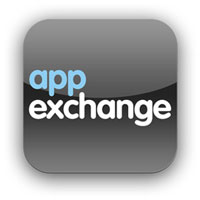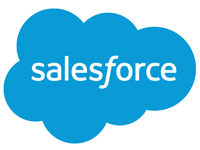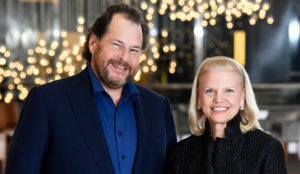
Salesforce this week announced significant enhancements to its AppExchange Partner Program, including a US$100 million Salesforce Platform Fund to encourage developers of AI-driven solutions, as well as changes to its partner business model.
Salesforce arguably was the first kid on the block with a partner program of this kind in which buyers could access a large community of apps based on a single standard from a single store. It’s worth remembering, for instance, that the “AppStore” was a Salesforce property that Marc Benioff gave to Steve Jobs when Apple announced its store.
At the time it seemed as though Benioff’s respect for Jobs got in the way of a good business decision, but history shows it was a shrewd move. An app store, as Apple has managed it, replicated a traditional hierarchical retail model. However, Benioff’s next iteration, the AppExchange, was a closer approximation of the give and take of a bourse — a software bourse, if you like, in which we are all potential buyers and sellers.
Salesforce partners are just as likely to incorporate other partners’ apps in their offerings as to sell their own. That’s the better model, and the idea that Salesforce has nurtured carefully and updated this week.
$389B Ecosystem
Platform is not limited to customer-facing apps, though. The number of apps on the AppExchange — like FinancialForce and others for enterprise resource planning or back office, or Xactly for incentive compensation management — gives ample evidence for the wisdom of supporting any business application with a platform. That’s why the AppExchange and the partner program that animates it are so important.
My poster child for platform-based apps is a company called “nCino,” which specializes in bank operations and has a great story to tell about business loan origination. It has managed to winnow a seven-week manual loan origination process down to 10 minutes or less, demonstrating not only the power of its apps, but also the power of the platform to enable the flexibility needed to do the job.
That’s not exactly CRM — or is it? The point is that the platform and the partner program have come into their own because they enable business leaders to imagine their businesses with far fewer limits to their creativity.
Consequently, even though the Salesforce Partner program had been successful, it was up for some retooling. New automation helps partners onboard quickly, and automated information dissemination makes it easier than ever to get the information you need to fine-tune a business.
On the other hand, automated learning systems embodied in the Trailhead program make it easy to train a workforce to go after platform opportunities.
Training might be the key to everything else for Salesforce, because the learning modules are available to anyone regardless of whether they are employed by a partner. I’ve seen estimates as high as 350,000 job openings for people with Salesforce skills. Self-paced learning systems are a fine way to reach some markets.
Surprisingly, the announcement also put a number on the size of the ecosystem, and it wasn’t small. At $389 billion, the Salesforce Economy dwarfs the parent company’s revenues and concretely demonstrates the value of leveraging the Salesforce1 Platform. At this level, there’s room for many partners selling complementary apps, or even apps that have little or nothing to do with CRM.
Partner Progress Score
At the recent CRM Evolution conference, I spoke about business agility and the importance of platform-based applications to support it. The logic is simple: Apps support processes and platform, which contain components that make applications modern like workflow, analytics, collaboration and journey mapping.
Building all of these components into a customer-facing app is both hard and tedious. In my opinion, you can’t have an agile business if you need to stitch all of this componentry together by hand — hence, the value of a platform.
The Salesforce announcement also mentions some partner program technical fixes that any vendor will need to make from time to time. New partner pricing and algorithms to score a partner’s business along four dimensions now are in place, including customer success, product success, team readiness and giving back. What would a Salesforce program be without an effort to give something back to the world?
Salesforce also is lowering the baseline percent-net-revenue (PNR) model for all new AppExchange Partner Program partners from 25 percent to 15 percent.
In all, these tweaks help to reinforce the bourse model of the partner program. Virtually all partners start small, and the changes will support that. Some partners stay small because of the niches they’ve adopted. However, other partners like nothing better than to get big.
The changes made to the program will help all of them — and Salesforce — to address that $389 billion channel opportunity. At the same time, $100 million in startup funding should ensure that the pipeline of emerging companies remains full.























































